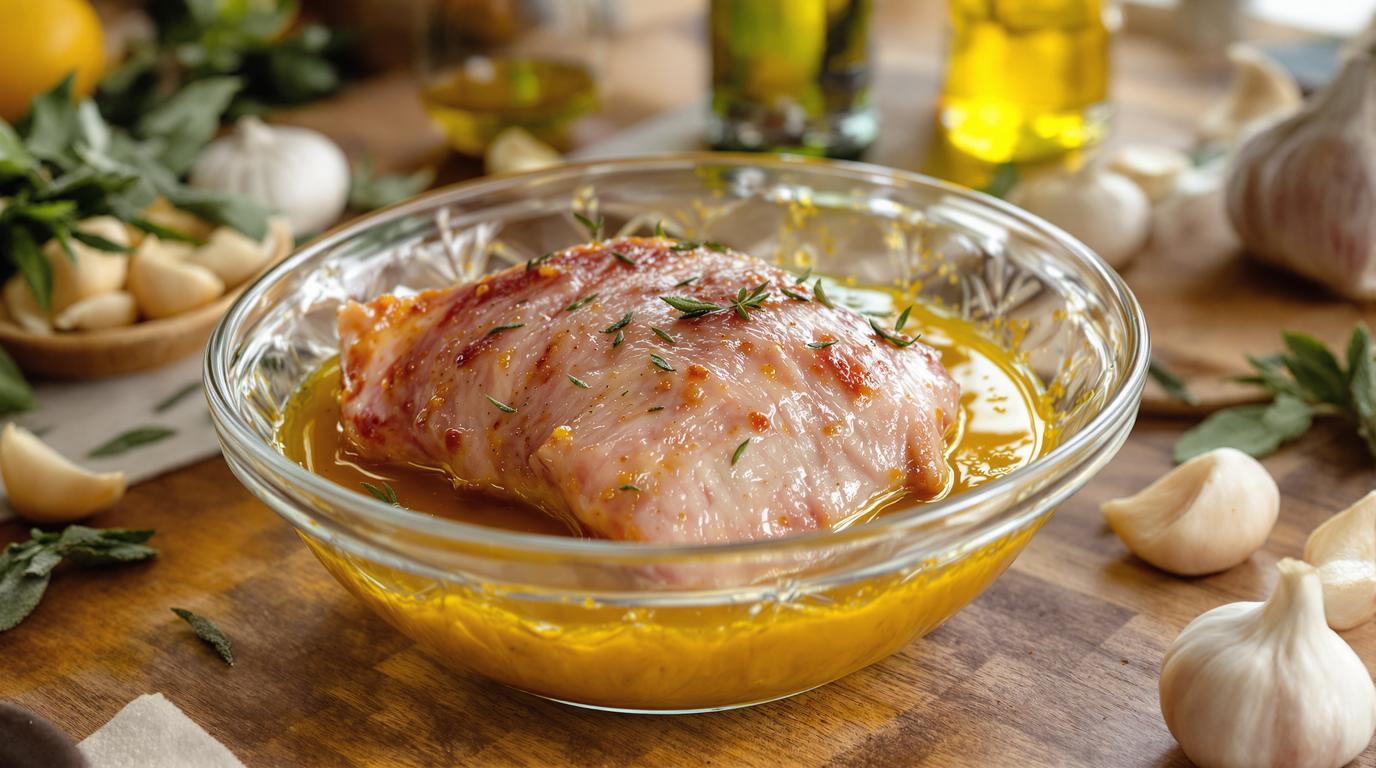There’s something magical about a well-crafted mustard marinade. Growing up, my grandmother would transform even the most humble cuts of meat into Sunday dinner masterpieces with her secret mustard blend. The sharp, tangy aroma would fill our kitchen, promising a meal that would have us all fighting for seconds. What makes mustard such a kitchen powerhouse is its unique ability to act as both flavor-carrier and tenderizer – something professional kitchens have relied on for centuries, but home cooks often overlook.
The Ancient Alchemy of Mustard Marinades
Mustard’s use as a marinade base dates back to medieval Europe, where it preserved meat while enhancing flavor. This culinary tradition traveled across continents, evolving with regional herbs and spices while maintaining its fundamental purpose. What many don’t realize is that mustard contains natural emulsifiers that help oil and vinegar bind together, creating a perfect vehicle for flavor to penetrate meat fibers.
The traditional marinade I’m sharing today honors those time-tested techniques while incorporating the perfect balance of acidity and aromatics. It works beautifully with pork and poultry, though I’ve included variations for other proteins and even vegetables. For a fiery kick that complements this marinade beautifully, consider adding a touch of Armenian pepper paste – the flavors are extraordinary together.
Essential Ingredients: The Perfect Balance
For the marinade (serves 4-6):
• 4 tablespoons (60g) Dijon mustard
• ¼ cup (60ml) white vinegar
• 2 cloves garlic, finely minced
• 1 tablespoon (15ml) olive oil
• 1 tablespoon dried sage (or 2 bay leaves)
• ½ teaspoon kosher salt
• ¼ teaspoon freshly ground black pepper
The Transformation Process: Step-by-Step
1. Create the emulsion base: In a medium bowl, whisk together the Dijon mustard and white vinegar until completely smooth. This first step is crucial – the mustard will act as an emulsifier, helping the marinade coat evenly and penetrate the meat.
2. Add the aromatics: Incorporate the minced garlic, dried sage (or bay leaves), salt, and pepper. The herbs should be well distributed throughout the mixture.
3. Introduce the oil: While continuously whisking, slowly drizzle in the olive oil. You’ll notice the marinade thickening slightly as it emulsifies. This creates a perfect texture that will cling to your protein rather than sliding off.
4. Apply with intention: Place your protein in a glass or ceramic dish (never metal when using acidic marinades). Pour the marinade over, ensuring complete coverage. For poultry or pork, marinate refrigerated for 2-4 hours; for vegetables, 30-60 minutes is sufficient.
Chef’s Note: The acid in this marinade will begin cooking protein fibers if left too long. For chicken or pork, never exceed 6 hours of marinating time, or you risk making the exterior mushy while toughening the interior – a common mistake even in professional kitchens.
The Science Behind Perfect Marination
The success of this marinade relies on three key elements working in harmony. First, the mustard’s natural emulsifiers ensure even distribution of flavors. Second, the vinegar’s acidity tenderizes surface proteins without penetrating too deeply. Finally, the oil carries fat-soluble flavor compounds while preventing the meat from drying during cooking.
If you’re looking for a memorable side dish, these marinated meats pair beautifully with crispy potatoes – the contrast between your tender, flavorful protein and the textural delight of perfectly crisp potatoes creates a dining experience reminiscent of classic bistro fare.
Cooking Your Marinated Creation
For best results, allow your marinated protein to come to room temperature for 20 minutes before cooking. This ensures even heat distribution and better browning. For chicken breasts or pork chops, I recommend a 375°F (190°C) oven for approximately 25 minutes, or until the internal temperature reaches 145°F (63°C) for pork or 165°F (74°C) for chicken.
For a quick finish, consider making a complementary sauce by reducing a portion of the reserved marinade (never use the marinade that contacted raw meat) with a splash of cream or a dollop of homemade mayonnaise – the additional richness balances the marinade’s acidity beautifully.
For dessert, nothing complements these savory flavors quite like a slice of 5-ingredient French chocolate cake – the deep, rich sweetness provides the perfect contrast to finish your meal.
Whether you’re preparing a quick weeknight dinner or impressing weekend guests, this traditional mustard marinade connects us to generations of kitchen wisdom while delivering a depth of flavor that elevates even the simplest ingredients. As my grandmother would say, “The secret isn’t just in the recipe – it’s in understanding how each ingredient works together to create something greater than its parts.” Happy cooking, friends!
